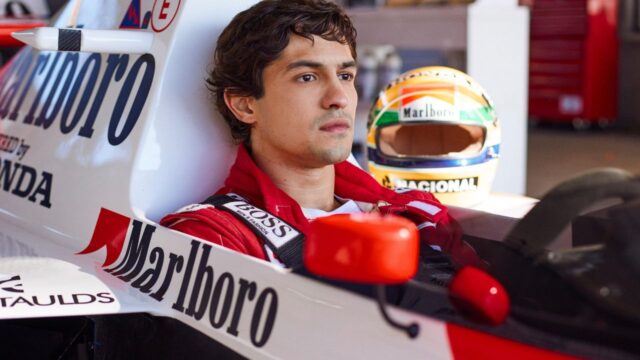Netflix’s Senna miniseries chronicles the 1994 crash and death of Ayrton Senna, one of the most well-known Formula One drivers ever. Due to Senna’s fame and dominance in the Formula One league, his untimely death in 1994 has gained notoriety and a lasting impact on the sport.
Here is a comprehensive account of what transpired, how it happened, and how its legacy has impacted Formula One racing, even as Netflix’s Senna delves into the circumstances surrounding the namesake driver’s passing.
The Senna miniseries, which tells the life of the famous Formula One driver, is now available on Netflix. In the 1980s and 1990s, Ayrton Senna was a well-known driver who competed in Formula One.
He holds five Formula One records, 41 victories, 65 pole positions, and three world champion crowns. Ayrton Senna’s personal and professional life, up until his untimely death on May 1, 1994, is vividly depicted by Gabriel Leone in the Netflix biographical drama.
How Did Ayrton Senna Crash at the Imola Grand Prix in 1994?

One of the last races that Ayrton Senna participated in was the San Marino Grand Prix in 1994, which took place at the Imola Circuit in Italy. Rubens Barrichello, Senna’s protégé, was involved in a serious automobile accident during practice on Friday before the Grand Prix but was spared.
Senna later set the fastest time in qualifying after seeing the event. After the race, though, Senna spent additional time to check his car for safety, which the shock of Barrichellos’ collision may have brought on.
Roland Ratzenberger, an Australian driver, was killed in another accident that occurred during a qualifying race the next day. Senna had an Austrian flag on the rear of his car on Sunday, which he said he would raise for his winning lap if he won.
At the beginning of the Sunday race, there was another crash, and a safety car was sent out to clear the track of debris. Senna and the other drivers followed the car slowly for five laps before it resumed at the beginning of the sixth lap.
On lap six, Senna recorded the third-fastest lap of the race. However, Senna’s car left the racing line on lap seven as he got close to the Tamburello circuit. He entered the turn at 192 mph (309 km/h) and raced right into an unprotected concrete barrier.
Before colliding with the wall, Senna tried to break, and he did so at 131 mph (211 km/h). The automobile bounced off the wall and spun before coming to a rest after the impact, tearing off the front wheel and nose.
How Did Ayrton Senna’s Car Crash Lead to His Tragic Death?

Senna was evidently in a serious vehicle accident because he remained still, moved his head slightly, and then stopped again. The tire that was lost in the collision struck Senna’s helmet’s right side, resulting in fatal fractures to her skull.
Not only had a piece of the upright assembly pierced above his right eye, but a piece of the suspension had also pierced his skull and helmet. On television, Senna is seen being removed from the vehicle by medical personnel and fire marshalls, with significant bloodstains visible.
Senna suffered severe head injuries and blood loss as a result of the vehicle fragments that damaged his superficial temporal artery after penetrating his helmet. When the race was halted, and a medical helicopter arrived, a tracheotomy was done on the spot.
Senna’s heart stopped ten minutes after he was taken to the Maggiore Hospital forty-three minutes after the collision. Senna’s death was declared at 18:40 after he was put on life support for a few hours and experienced a second heart attack at 18:37.
Did the Ban on Electronic Aids Contribute to Senna’s Crash?

Ayrton Senna’s collision and death sparked several significant debates in the Formula One community, with many fans questioning whether or not electronic driver-aids were a contributing factor in his demise.
Active suspension, traction control, and anti-lock brakes were among the technological driver aids the Williams team introduced in the late 1980s. Even though they were contentious, these additions helped Williams drivers do well in their races, even though many other teams didn’t like them.
It was decided that these aids would cease to be utilized after the 1993 season after several well-known Formula One personalities tried to have them banned from the sport. Senna agreed to play with or without the electronic aids when he joined the Williams team for the 1994 season.
Williams was forced to alter their vehicles after the assistance was eventually outlawed. This has sparked conjecture that the new Williams models caused Senna’s death; however, it is impossible to determine with certainty given the multitude of circumstances surrounding the collision.
How Did Ayrton Senna’s Death Transform Formula One Racing?

Senna and Ratzenberger’s passing significantly affected the San Marino Grand Prix and Formula One racing. The FIA was heavily criticized for the rule revisions, and many Formula One fans and competitors demanded safety enhancements.
Before the Monaco race, the FIA quickly disclosed new regulation modifications about pit stops and who could enter the pit lane surface. The FIA announced additional safety measures after reorganizing the Grand Prix Drivers’ Association.
It was announced that the front wing end plates would be increased for the Spanish Grand Prix, but the diffusers and front wing would be smaller. Then, in response to Senna’s passing, several significant adjustments were announced for the Canadian Grand Prix, many of which had to do with head safety and preventing tires from colliding with drivers.
With the help of these improved safety precautions, more collisions like the one that killed Senna have been avoided, and the driver’s legacy has been preserved in Senna on Netflix.
About Senna
On 1 May 1994, Brazilian Formula One driver Ayrton Senna was killed after his car crashed into a concrete barrier while he was leading the 1994 San Marino Grand Prix at the Imola Circuit in Italy. The Supreme Court of Cassation of Italy ruled that mechanical failure was the cause of the crash, as post-crash analysis found that Senna’s steering column had snapped around the time that his car was about to round the Tamburello corner.
Senna’s death was the capstone to one of the darkest weekends in Formula One history. The previous day, Austrian driver Roland Ratzenberger had died when his car crashed during qualifying. Several other collisions took place that weekend, including a serious one involving Rubens Barrichello. Ratzenberger and Senna’s crashes were the first fatal accidents to occur during a Formula One race meeting since Riccardo Paletti died at the 1982 Canadian Grand Prix.
Senna’s death, as well as the other events of the race weekend, helped trigger significant reforms prioritizing driver safety in Formula One. The Formula One drivers’ union, the Grand Prix Drivers’ Association, was re-established in the wake of Senna’s death. Formula One did not suffer a fatal accident for another twenty years, until Jules Bianchi sustained fatal injuries at the 2014 Japanese Grand Prix.









No Comments on What Really Happened in Ayrton Senna’s Tragic Crash and Death at Imola in 1994?